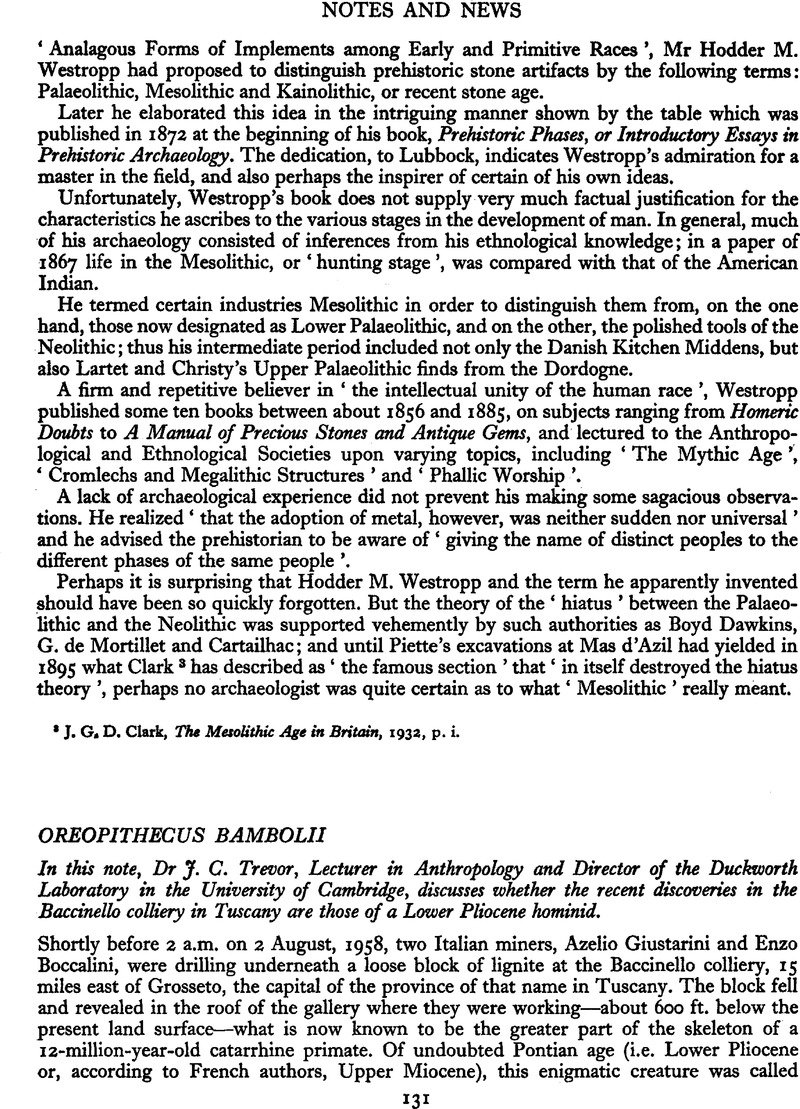No CrossRef data available.

1 The first part of the name of the genus was chosen to indicate the ‘ hillocky ’ nature of the high-cusped molar teeth of its members, and not to suggest that they lived in mountains 1 Indeed their habitat was paludal, a happy circumstance in palaeontology, for, while running water disperses and mixes animal remains, marshes tend to preserve these more or less intact at the scene of the owner’s death. Monte Bamboli (also in the Tuscan maremma), the site of the earliest Oreopithecus find almost a century ago, accounts for the specific epithet.
2 Simpson’s scheme of the higher taxonomic categories of the primates, which accords respective super-familial rank as the Cercopithecoidea and Hominoidea to the Old World monkeys on the one hand and to the apes (Pongidae) and man and his predecessors (Hominidae) on the other, is adopted here because of its wide currency rather than as a pis-aller. The older term ‘ catarrhine ’, embracing both cercopithecoids and hominoids, is used infraordinally to distinguish them from the platyrrhine or New World monkeys.